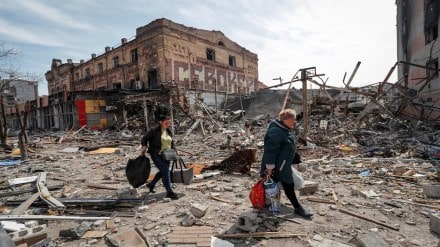Prospects for a cessation of hostilities look bleak for the 40 month-long war between Russia and Ukraine and the 20 month-long battle between Israeli forces and Hamas in Gaza. They are perhaps two of the most consequential conflicts in the world today. The second round of direct talks between Russia and Ukraine in Istanbul, like the first round on May 16, did not provide any major breakthrough, barring a deal to swap sick and wounded prisoners of war, those under 25 years of age, and bodies of slain soldiers.
While Russia proposed a two- or three-day truce “in certain areas”, it rejected Ukraine’s demand for a “full and unconditional ceasefire” of 30 days. A ceasefire in Gaza — that is being mediated by the US, Qatar, and Egypt — is equally elusive due to the maximalist demands of both Israel and Hamas.
Israel is ready only for a temporary ceasefire to facilitate the return of 59 hostages still held in Gaza, only half of whom are believed to be alive. Hamas seeks guarantees that this ceasefire would evolve into a permanent cessation of hostilities, besides the full resumption of humanitarian aid into Gaza which Israel has blocked since March. The tenuous prospects for peace in Ukraine and Gaza are a major setback to US President Donald Trump who promised to end the war between Russia and Ukraine in 24 hours.
Trump fancies that he has a personal equation with Russian President Vladimir Putin and even talked directly with him to agree to an unconditional ceasefire. Putin obliged with only a conditional ceasefire that swiftly unravelled. The fact that the US President has so far not used his leverage to impose tougher sanctions on Russia exemplifies the problematic nature of his less than even-handed approach to peacemaking.
While Trump is willing to concede to Russia’s demands, he has been relatively harsh on Ukraine’s President Volodomyr Zelenskyy and even extracted a minerals deal as payback for past US military support. On Gaza, too, while Trump secured a three-phase ceasefire ahead of his presidential inauguration, Israel’s Prime Minister Benjamin Netanyahu broke the agreement two months later after consulting his administration. As if all of this weren’t bad enough, Israeli forces shot 27 hungry Palestinians who thronged a food distribution site in southern Gaza that is part of a contentious new aid programme overseen by the Gaza Humanitarian Foundation.
Peace is elusive in Ukraine and Gaza as the warring parties do not feel the need to silence their guns until they achieve their military objectives. Ukraine is unfazed by the daily barrage of Russian missile and drone attacks on its cities and recently launched drone strikes knocking out Russian long-range bomber aircraft in airfields far away from the frontline in eastern Siberia. Kyiv has also struck a vital bridge in Crimea for the third time. Russia, for its part, registers significant gains in Ukraine’s eastern region. Both sides thus seem determined to keep on fighting.
In Gaza, too, Netanyahu is determined to totally destroy Hamas and militarily occupy the Strip. While he obliged Trump to claim bragging rights as a peacemaker and unifier, perhaps in exchange for fewer restraints to deal with the Palestinians, those who are suffering the most are the hapless Gazan citizenry — of whom 54, 470 have been killed, mostly women and children — who are experiencing full-blown humanitarian crisis conditions.
